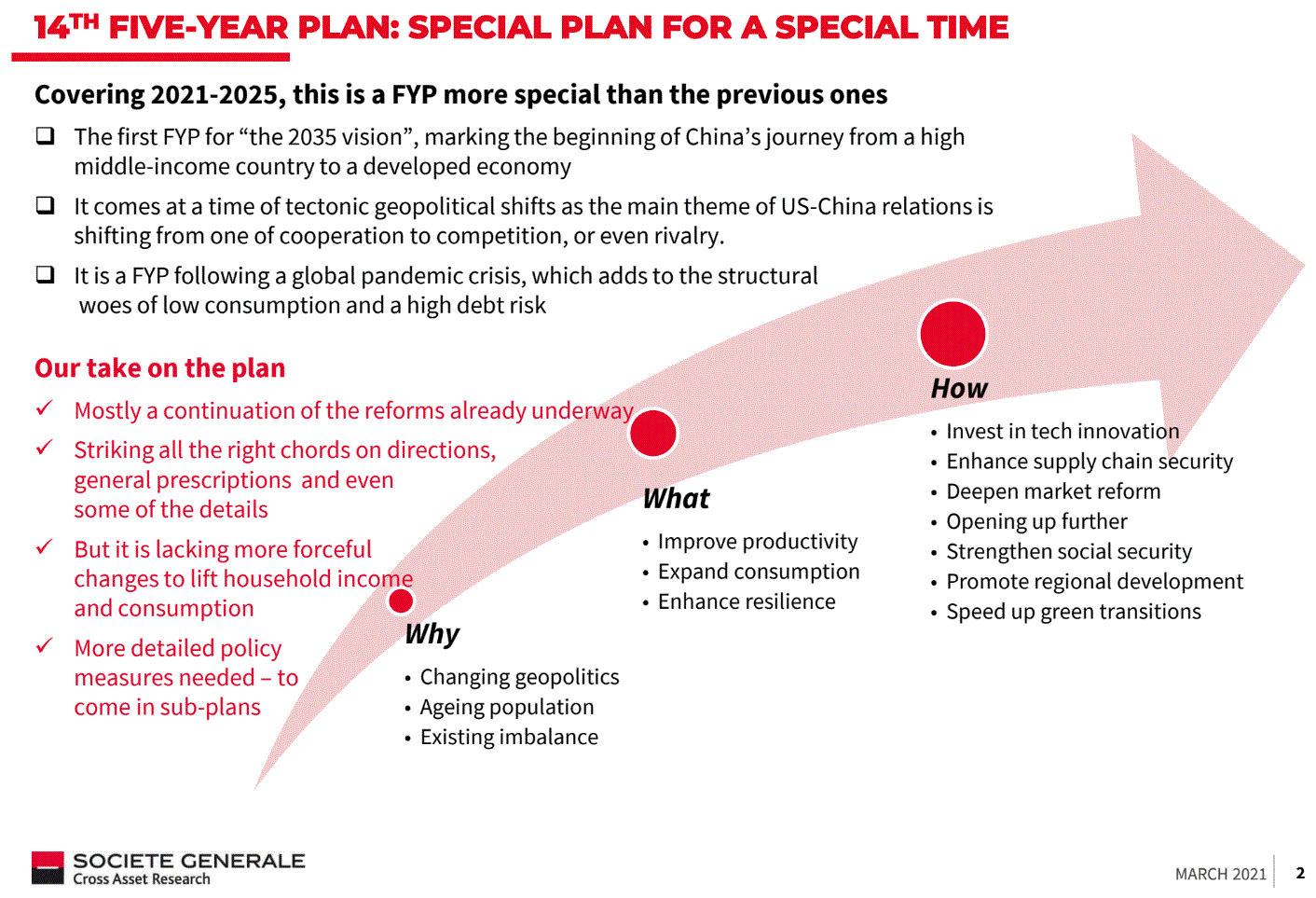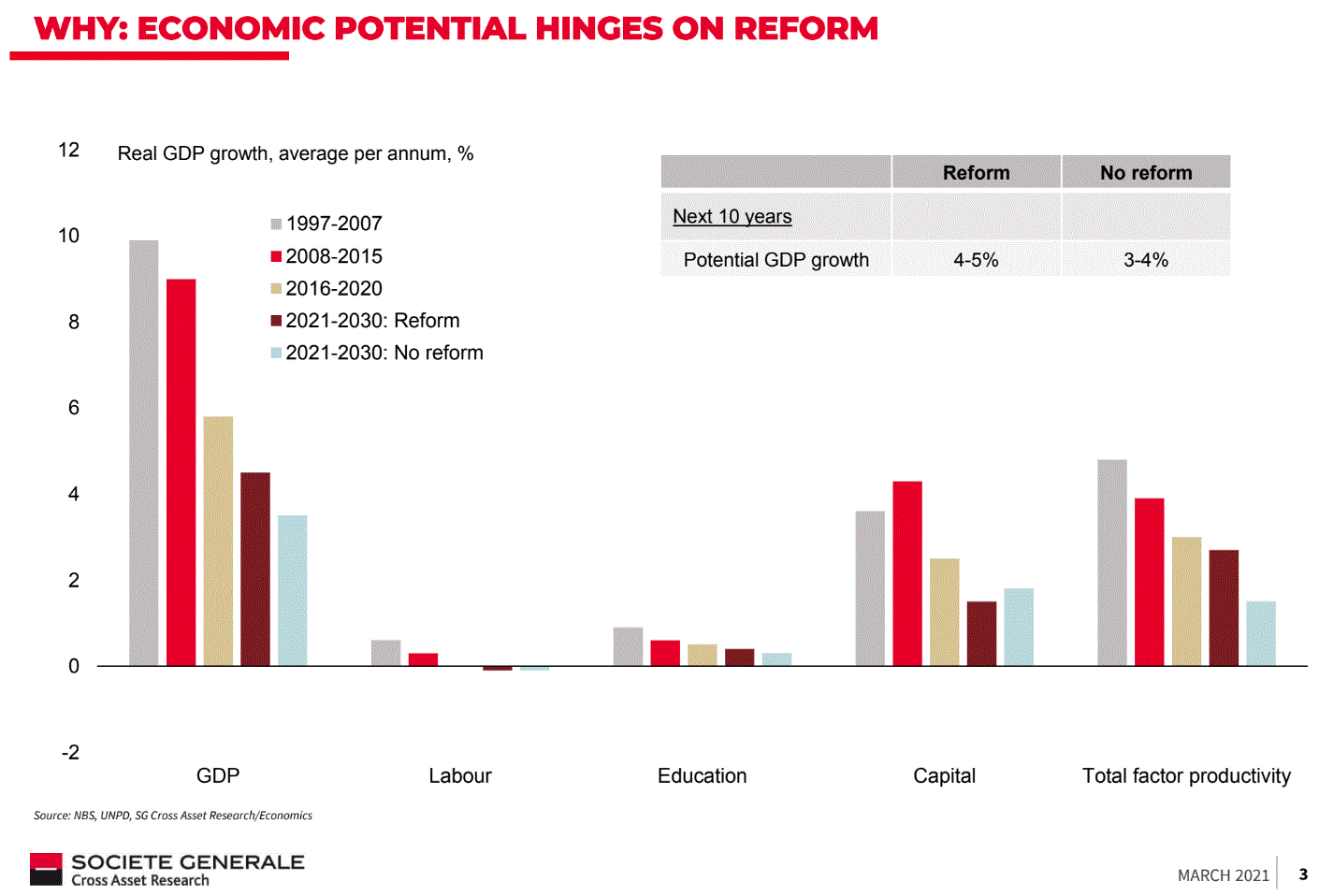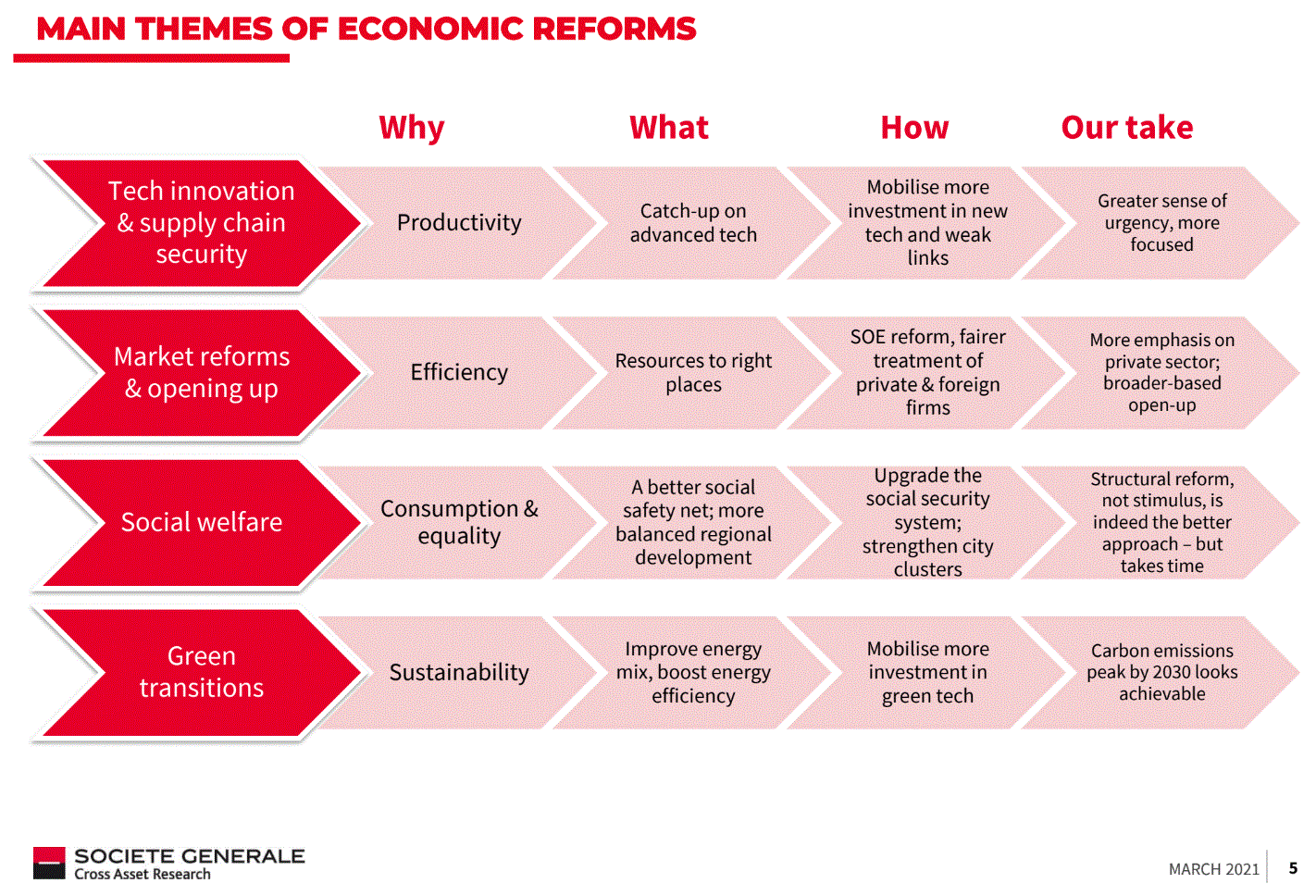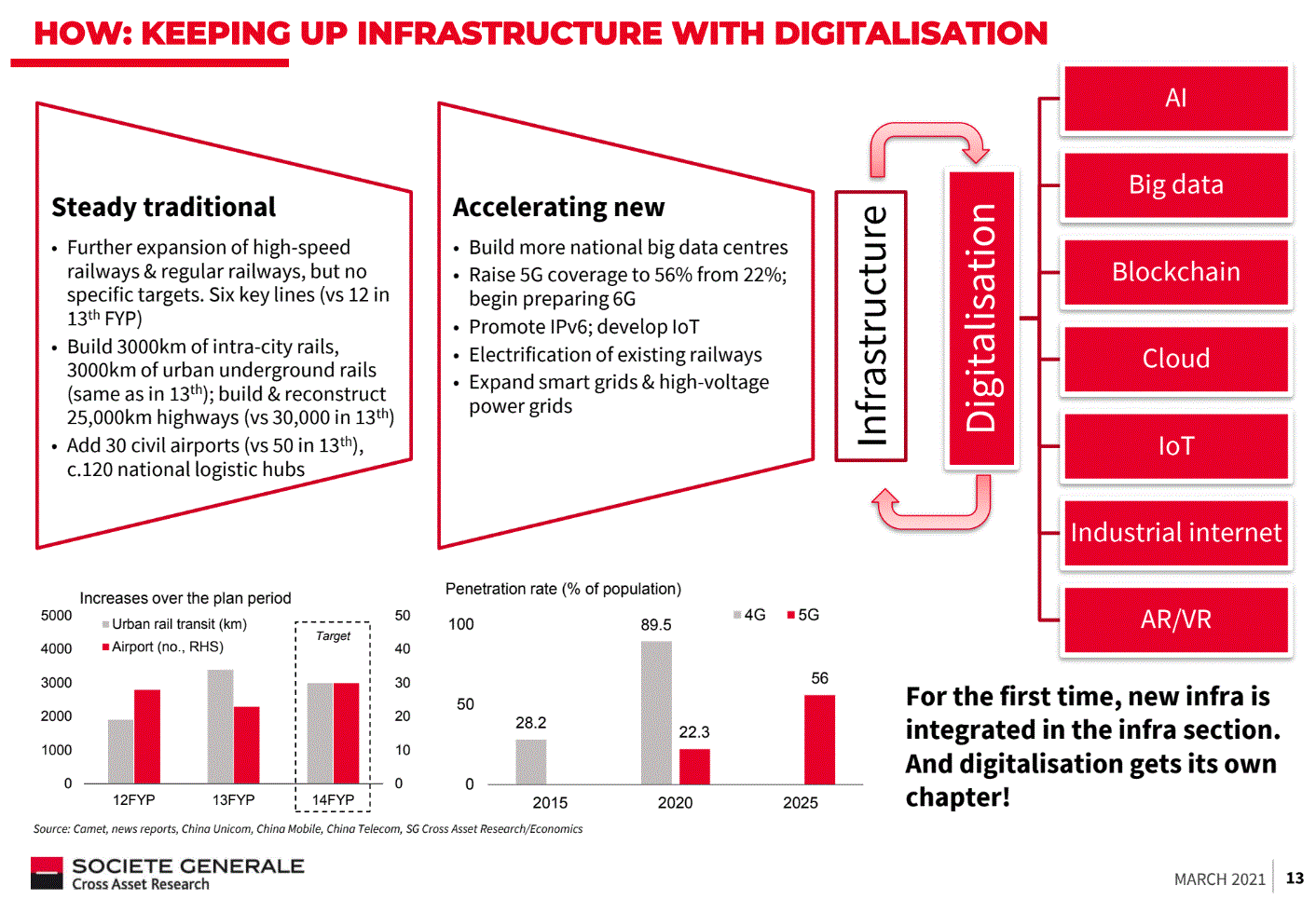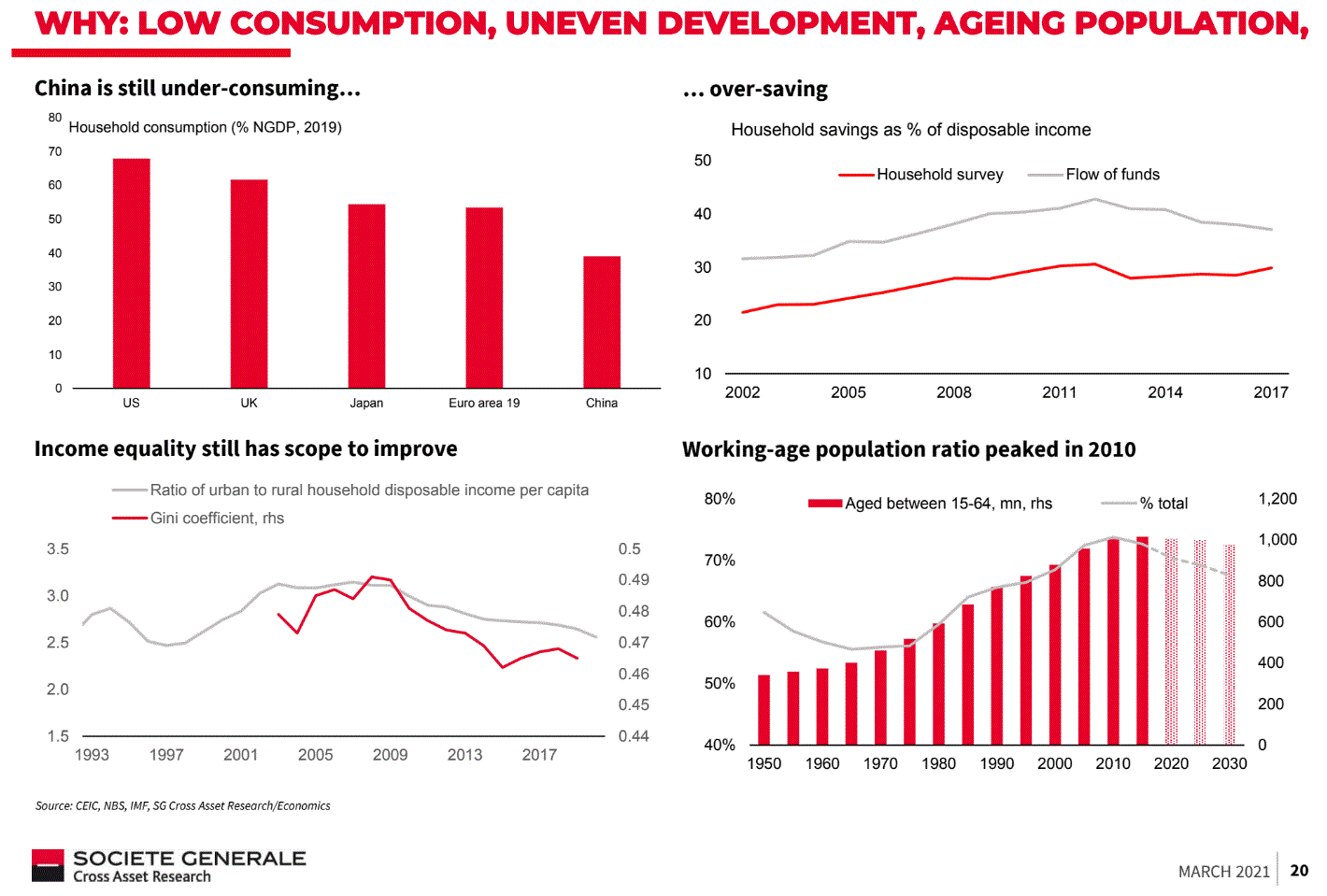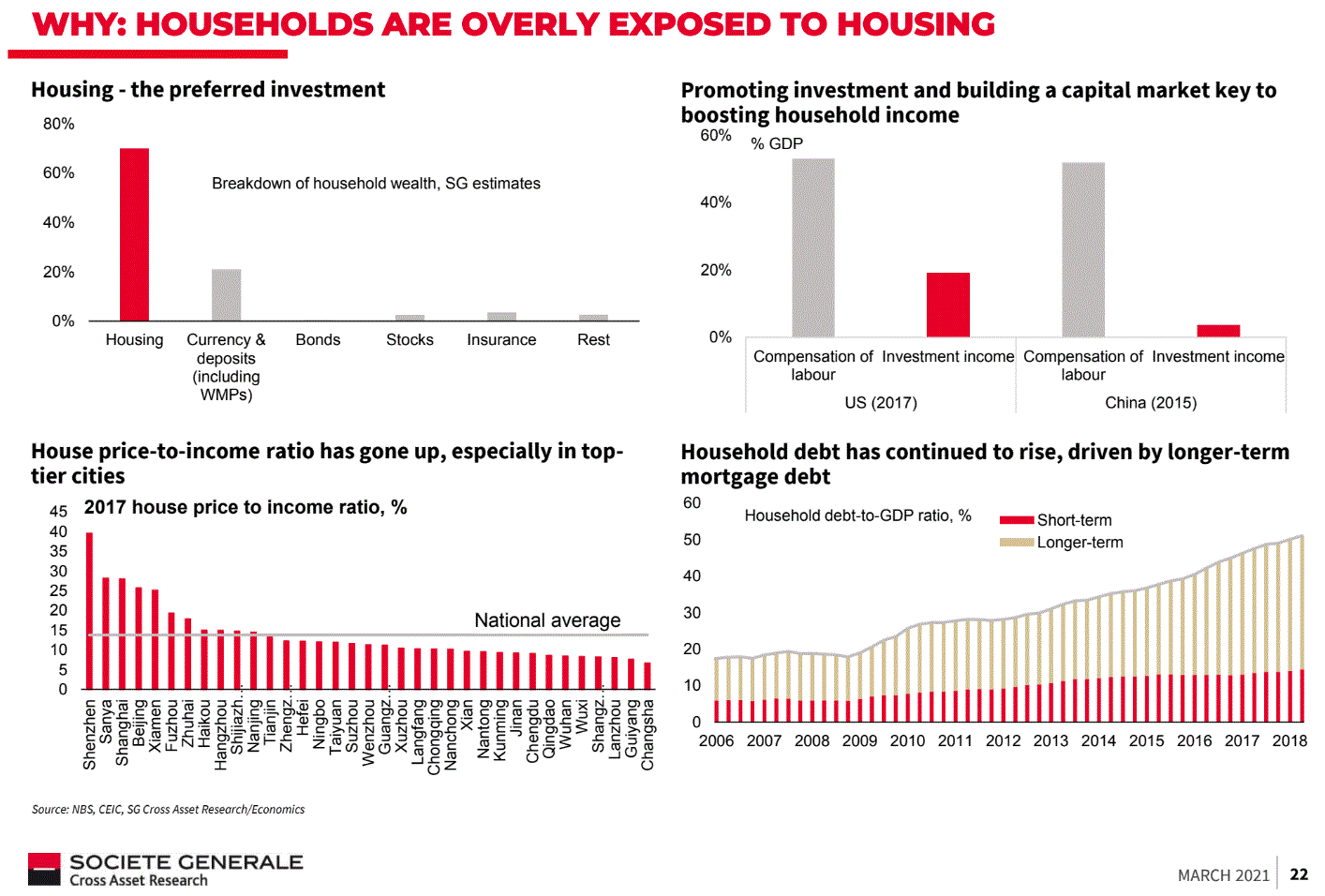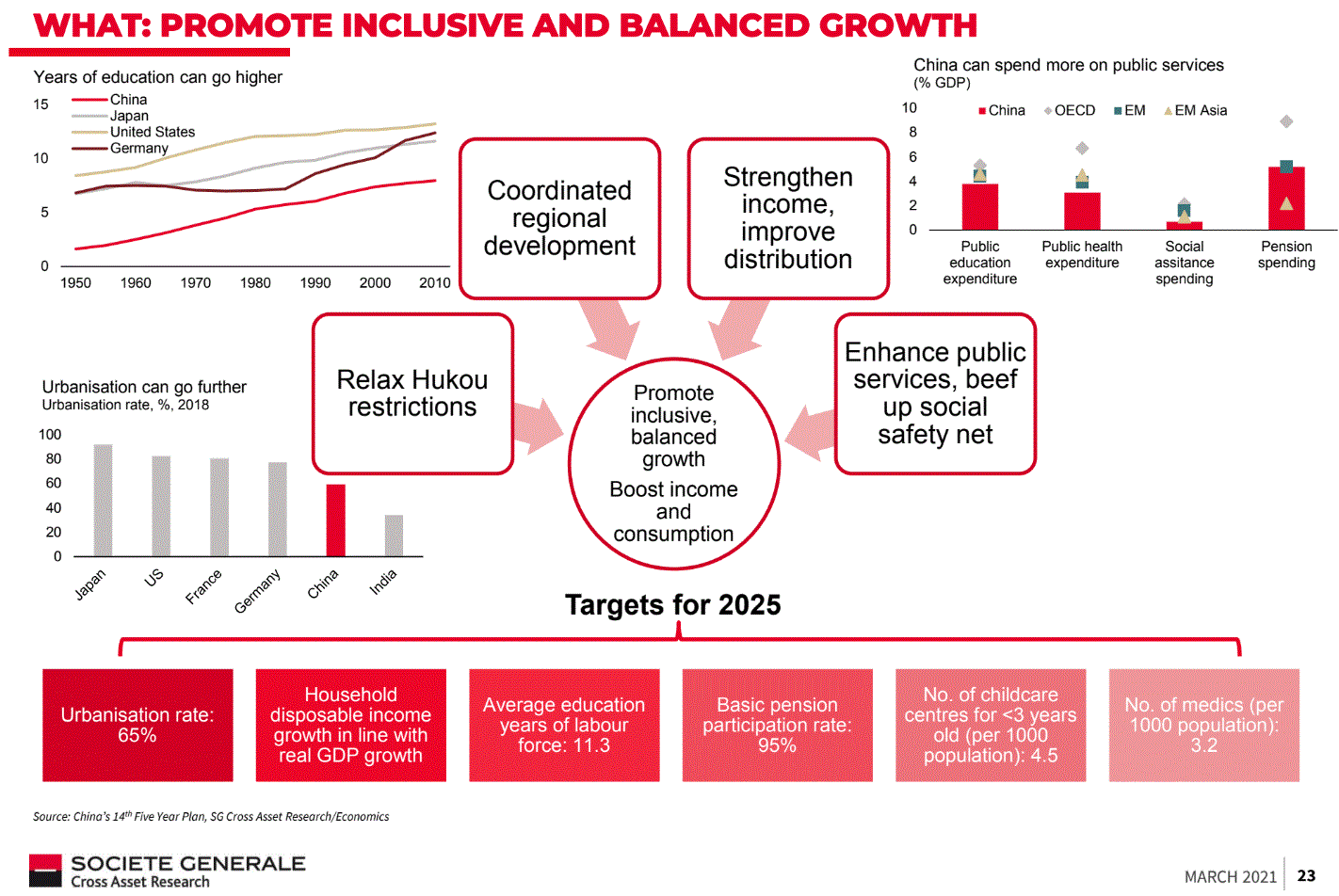For many years it has been obvious that the Chinese needed to change their growth model. They have had a little success in shifting away from wasteful commodity-centric investment and towards consumption but not enough. Every time they looked like accelerating the structural reforms they backtracked quick smart as growth slowed jeopardizing CCP legitimacy.
But each time that has happened the underlying risk of long-term economic stagnation has grown such that it is now the base case. Hence it is no surprise to see accelerated restructuring at the heart of the new Five Year Plan and it is an unfolding calamity for bulk commodity demand.
From SocGen, here is the top dow view which all about quality over quantity:
To fix this:
Building more wasteful stuff hardly gets a mention:
And this is where it goes from unsettling to alarming for Australian bulk commodities. The major two drivers of steel demand are infrastructure and property. Both are to be under pressure.
All major rail and airport construction planning is down:
Worse, there is a distinct focus on lifting household income and shifting wealth away from property:
And the urbanisation rate will slow sharply in terms of the absolute number of people moved:
My following chart is based upon 70% urbanisation by 2030 which would continue the proposed 65% by 2025 pace:
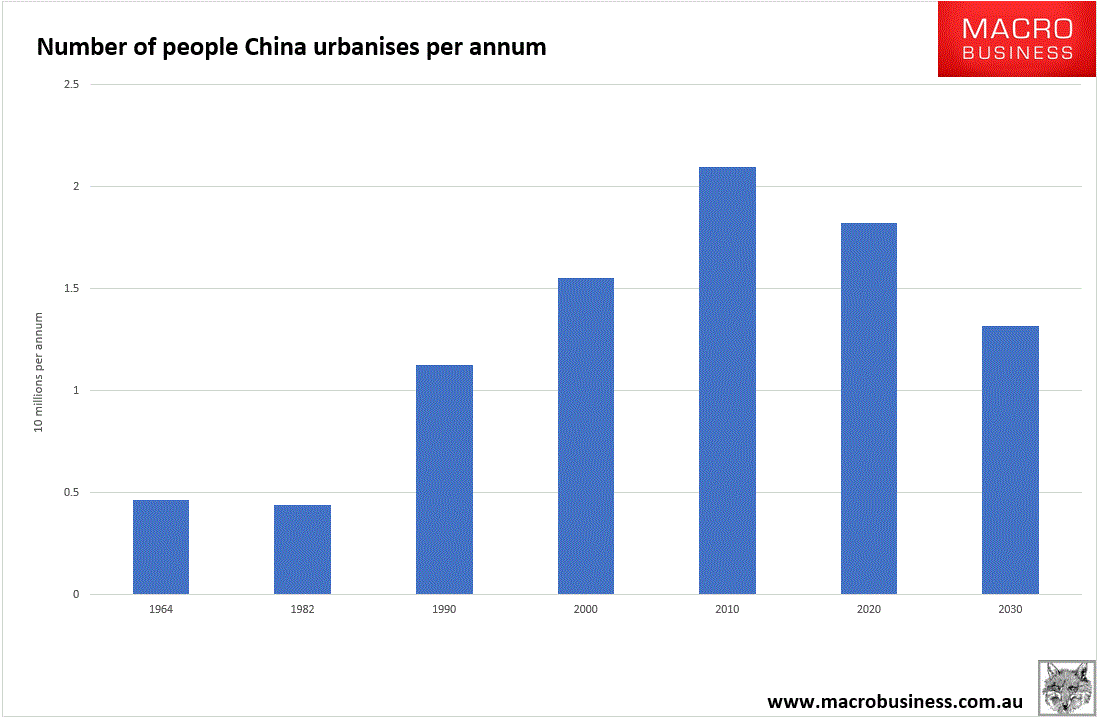
And don’t forget that a lot of the building to accommodate these people has happened in advance in the form of 70m empty apartments and roads to nowhere.
No doubt there will be ebbs and flows of cyclical stimulus within this slowing structure, not least because Chinese technological advancement is badly hampered by its centralisation. But the purpose is there and will set the trend.
In short, China has deepened its commitment to the structural reform that will kill iron ore inexorably in the long run.
My long-term $40 price target is now possible by 2025.

